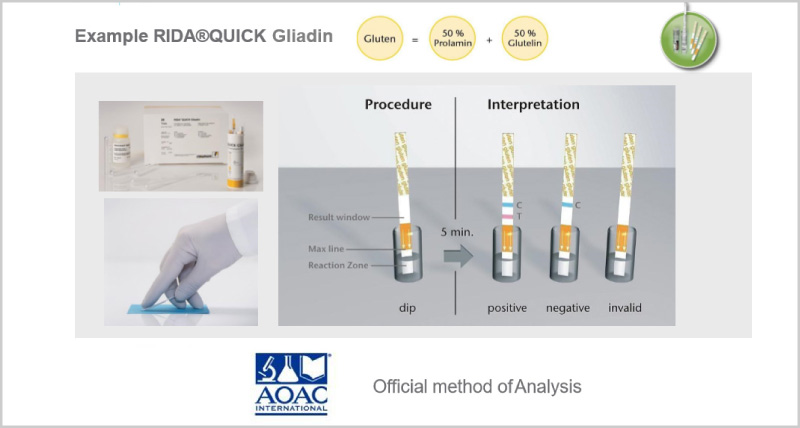Food and Feed Testing for Allergens
Food and Feed Testing for Allergens
An allergen is a substance in food that causes a vigorous immune response to a perceived threat that would otherwise be harmless. It stimulates a type 1 hypersensitive reaction through immunoglobulin E response. Usually this occurs only in individuals that have a special disposition called atopy which can be hereditary or acquired. The FDA recognizes eight foods as commonly responsible for food allergies and they are peanuts, tree nuts, eggs, milk, shell fish, fish, wheat and their derivatives, soy and their derivatives, and sulfides. The EU regulation specifies 14 allergens as celery, cereals containing gluten including wheat, oats, rye, barley, crustaceans, eggs, fish, lupin, milk, mollusks, mustard, tree nuts, peanuts, sesame seeds, soya beans, sulphur dioxide and sulfites. This is stated in the Regulation (EU) No 1169/2011 of the European Parliament and of the Council of 25 October 2011.
The Federal Food Drug and Cosmetic Act requires that the label of a food product disclose the presence of an ingredient derived from one of the eight allergens stated. If there is risk of a food being affected by cross contamination, the label should contain a warning of the allergen. Free from foods are special ranges of food made without allergens. Manufacturing of such products must be based on specific and rigorous controls to ensure that the final product is below the regulatory standards. Special efforts to prevent cross contamination during manufacturing. As such cleaning of production equipment after a change of product becomes very important and a cleaning validation is needed. This is specifically emphasized in the Food Safety Modernization Act good manufacturing practice and preventive controls. Sub section 117.3 of this act spell out allergen cross contact and sub part B establishes GMP guidelines to prevent allergen cross contamination. Sub section 117.135 establishes requirements for preventive controls. Sanitation controls, testing and cleaning validation is an important requisite for all the above regulations.
To carry a risk assessment of allergens it is prudent to carry out a thorough review of the allergen status of all ingredients and their processing conditions that contribute towards the allergen status of the final product. To this end, use of the Allergen bureau’s VITAL program (Voluntary Incidental Trace Allergen Labelling) is useful. VITAL allows the assessment of likely sources of allergen cross contact from raw materials and the processing environment, plus an evaluation of the amount present and a review of the ability to reduce the allergenic material from all contributing sources. VITAL also provides for ongoing monitoring and verification of the risk assessment process to ensure any changes to the level of risk are acted upon without delay.
Detection Methods for Allergens

BioControl FLASH is a rapid snap test for online verification of protein contamination after cleaning. This protein visual test reacts with protein molecules left on the cleaned surface. As all the big eight allergens specified by FDA are all proteins, this test is used for allergen control by many food manufacturers. The test forms an essential part of the overall HACCP program. It has two levels of sensitivity - 20 ppb when used at room temperature and 3 ppb when incubated at 70°C making it easy for QA managers to manage the risk of cross contamination. Specific levels of the big eight allergens are as specified in the table shown. After activation, the swab head change color to green for pass and grey for caution and two shades of purple for fail. Any color change after 14 min should be disregarded.

We provide the best services about science.
About Company
Sitemap
Please contact our friendly sales staff for more information.
Feel free to ask us questions. We would love to assist you !





